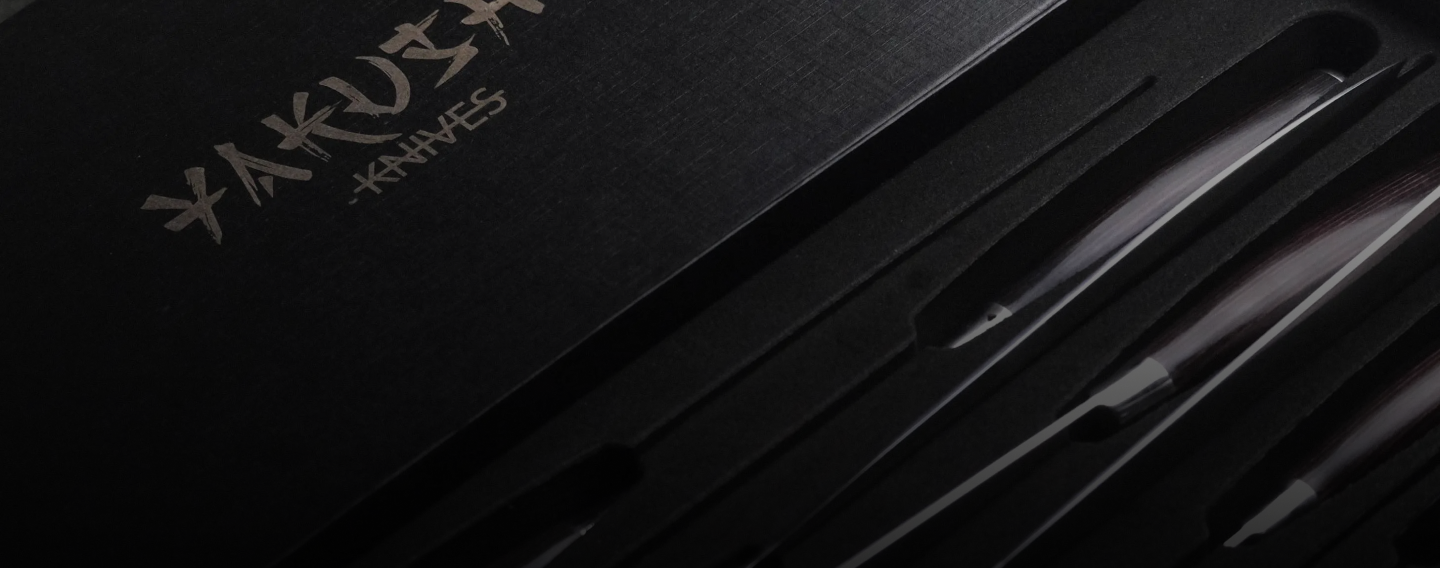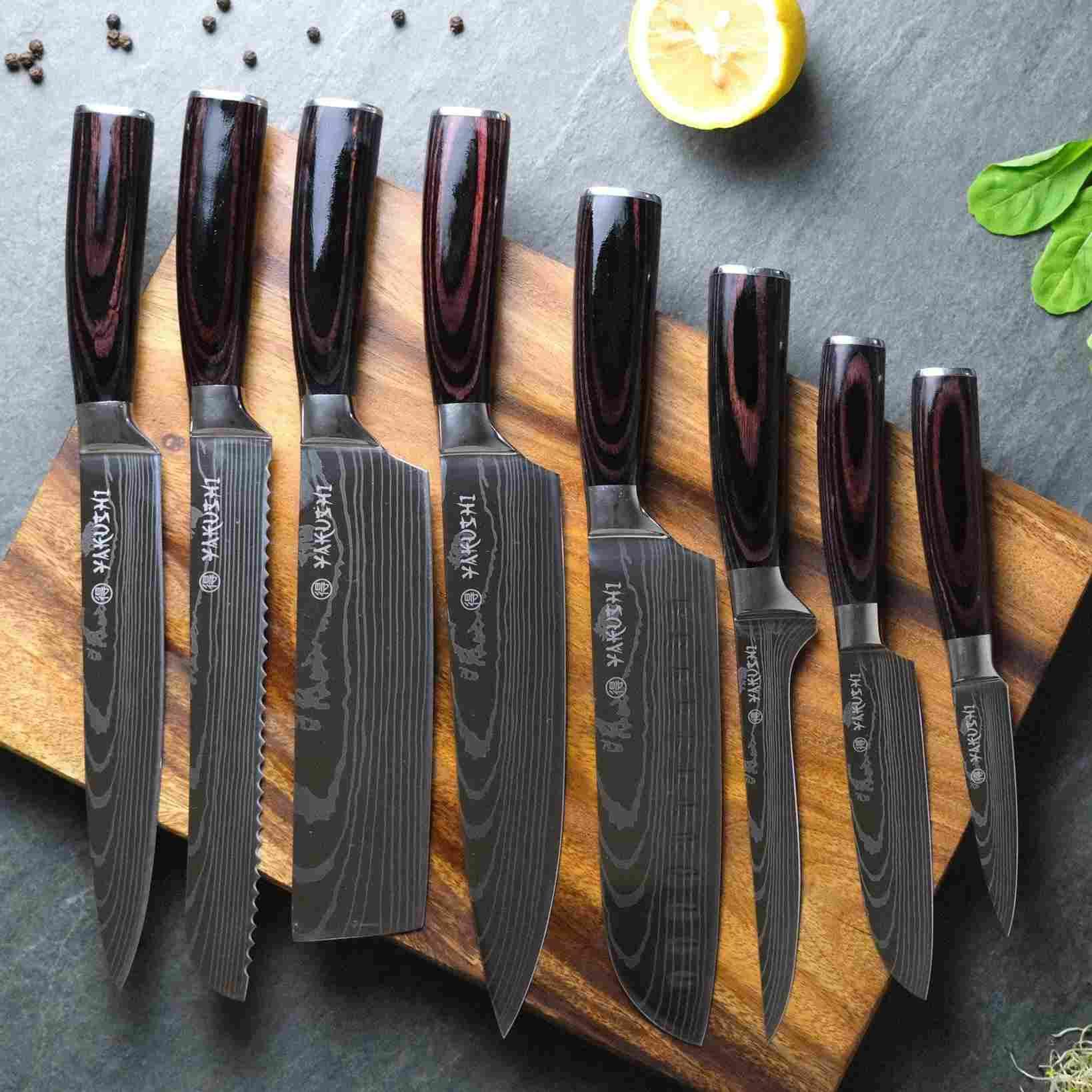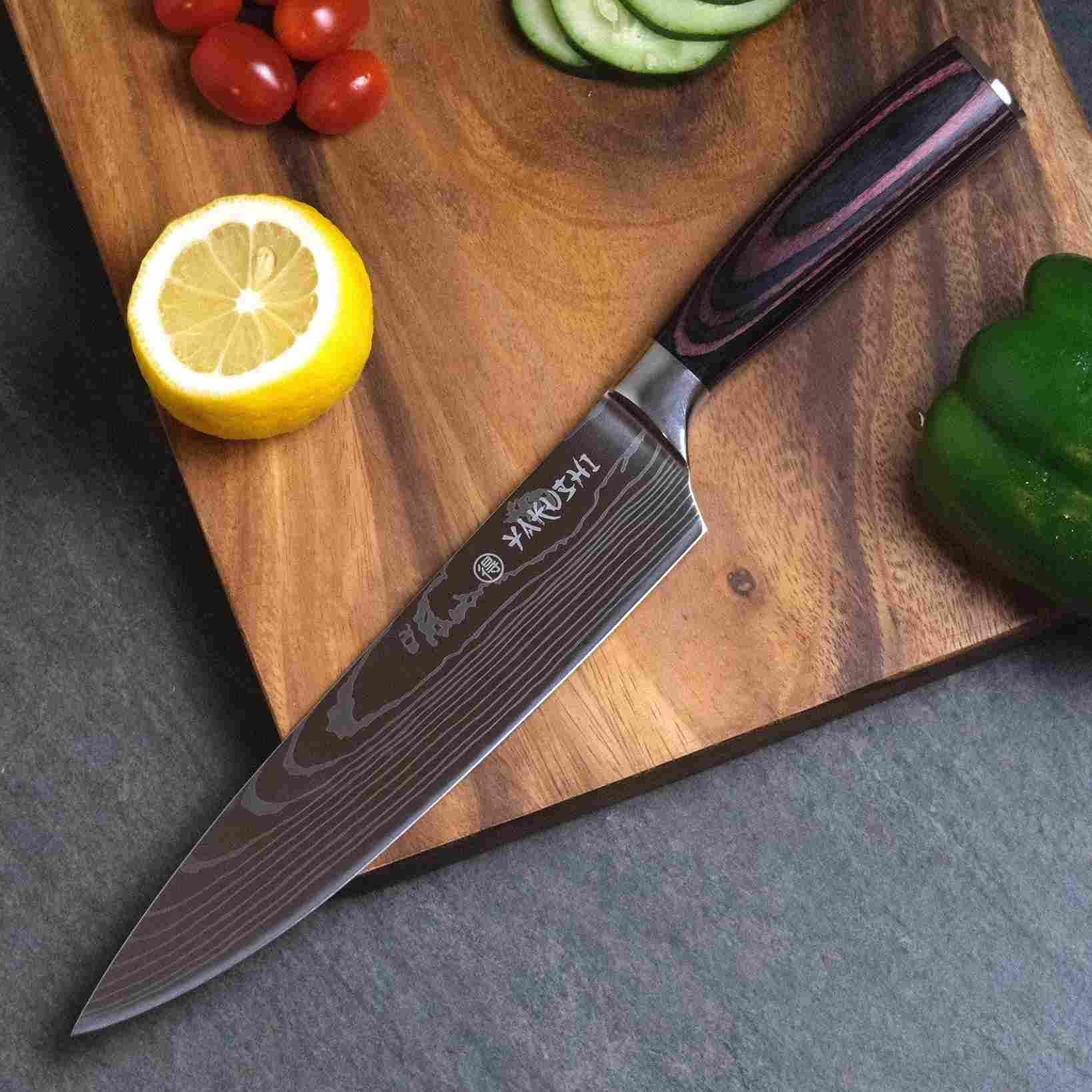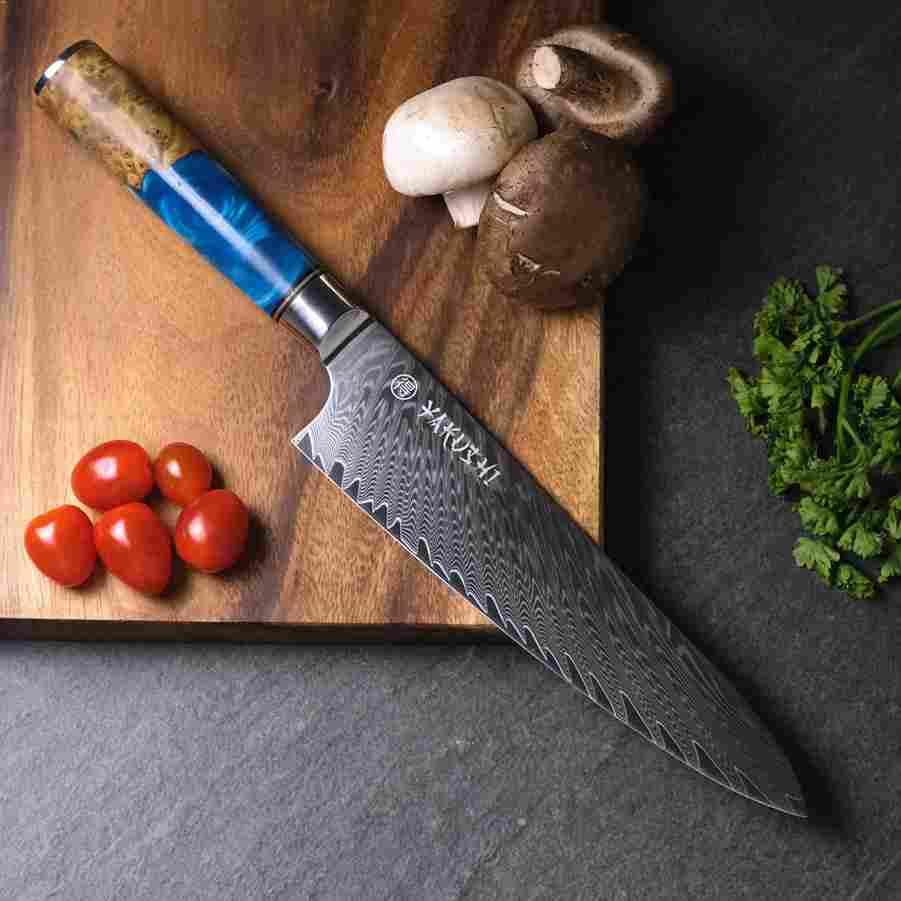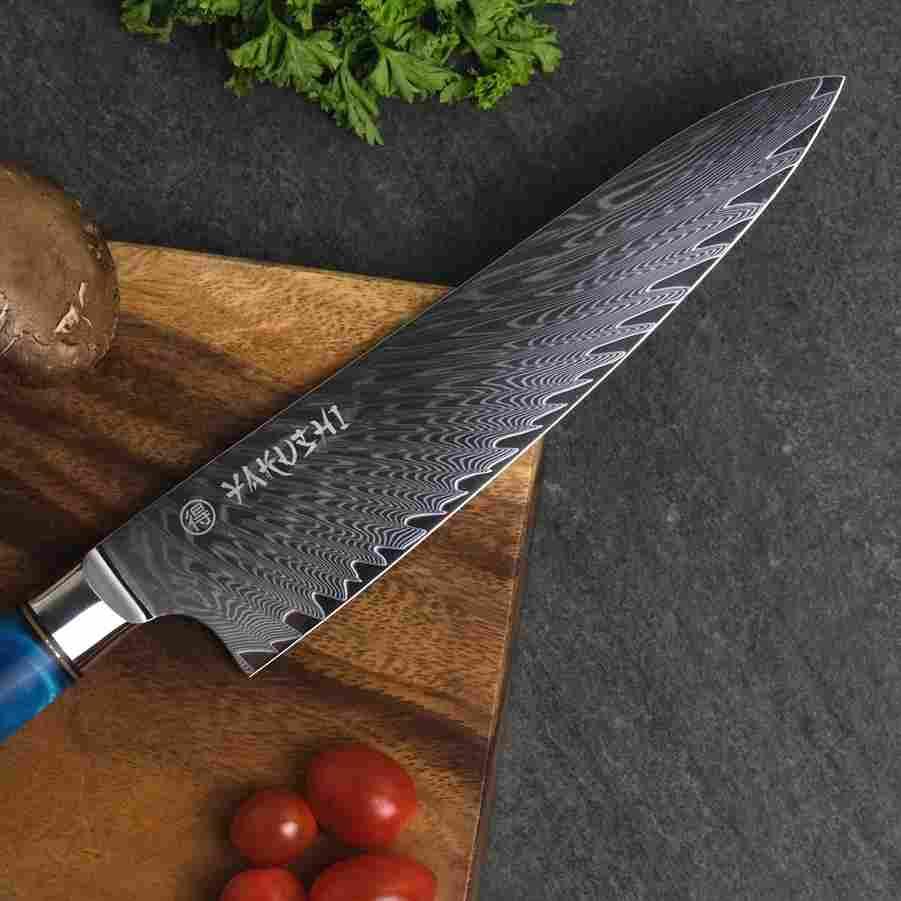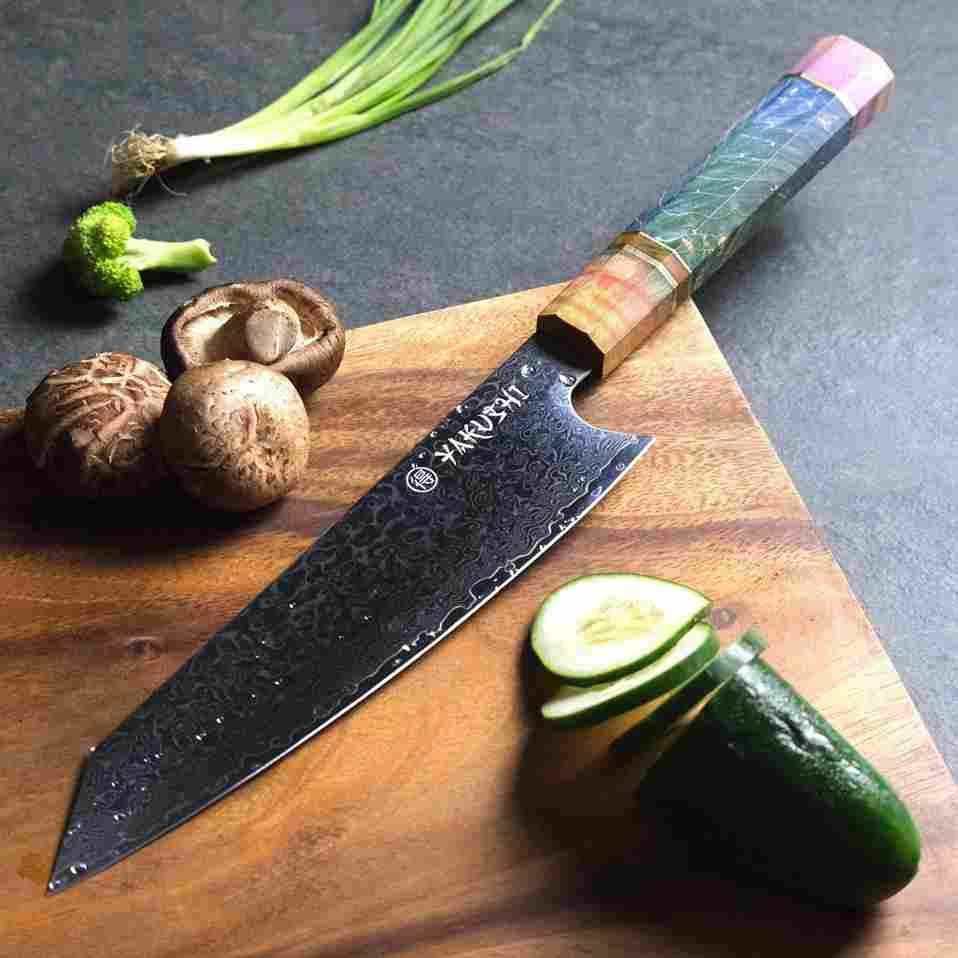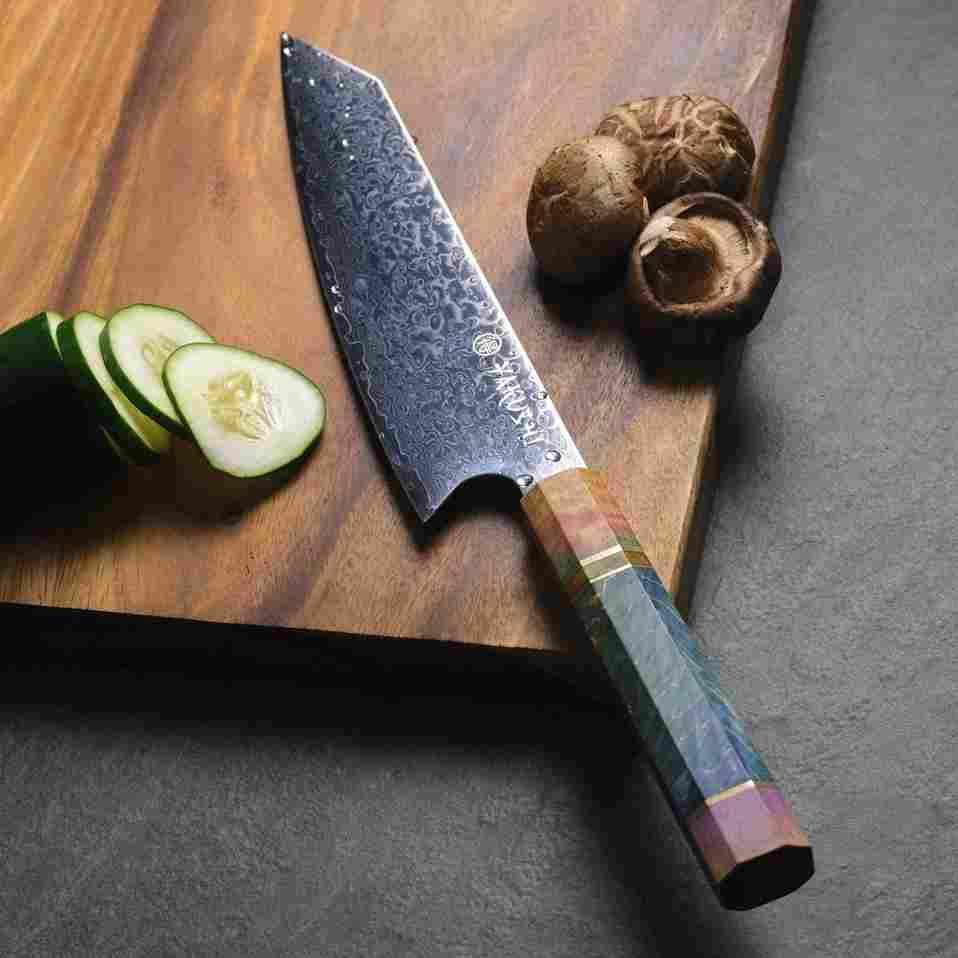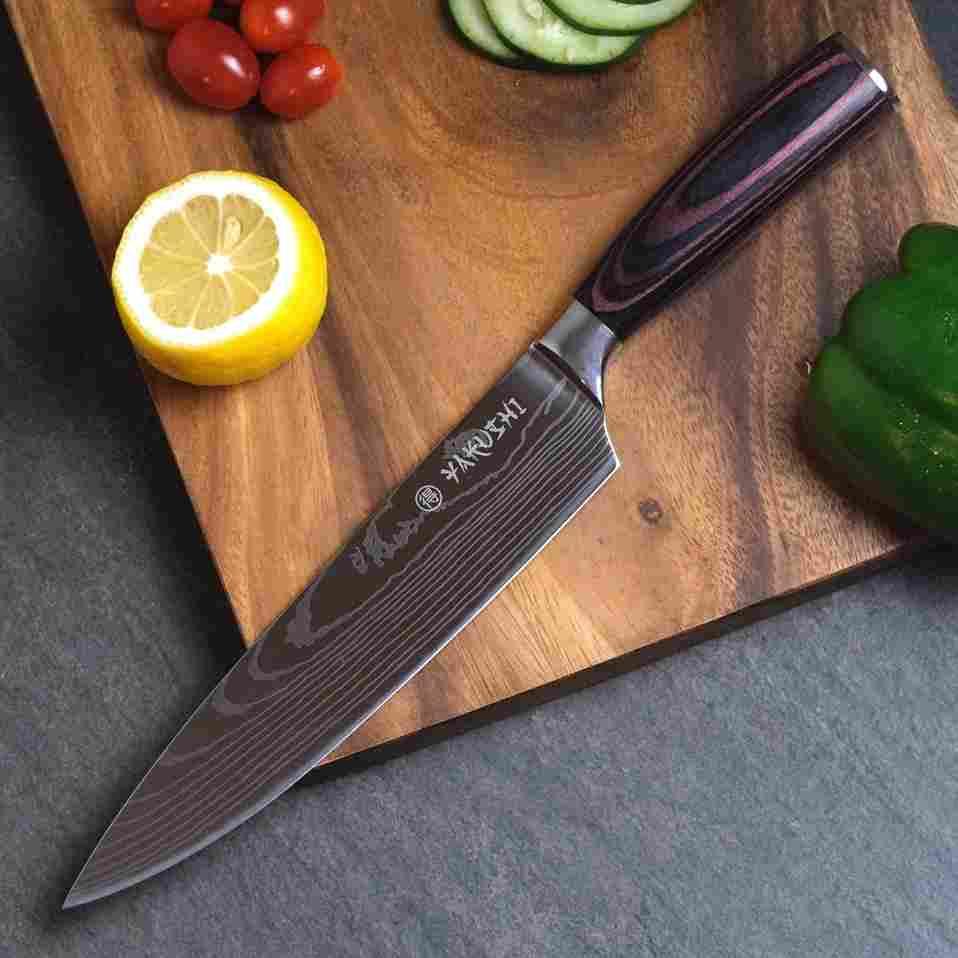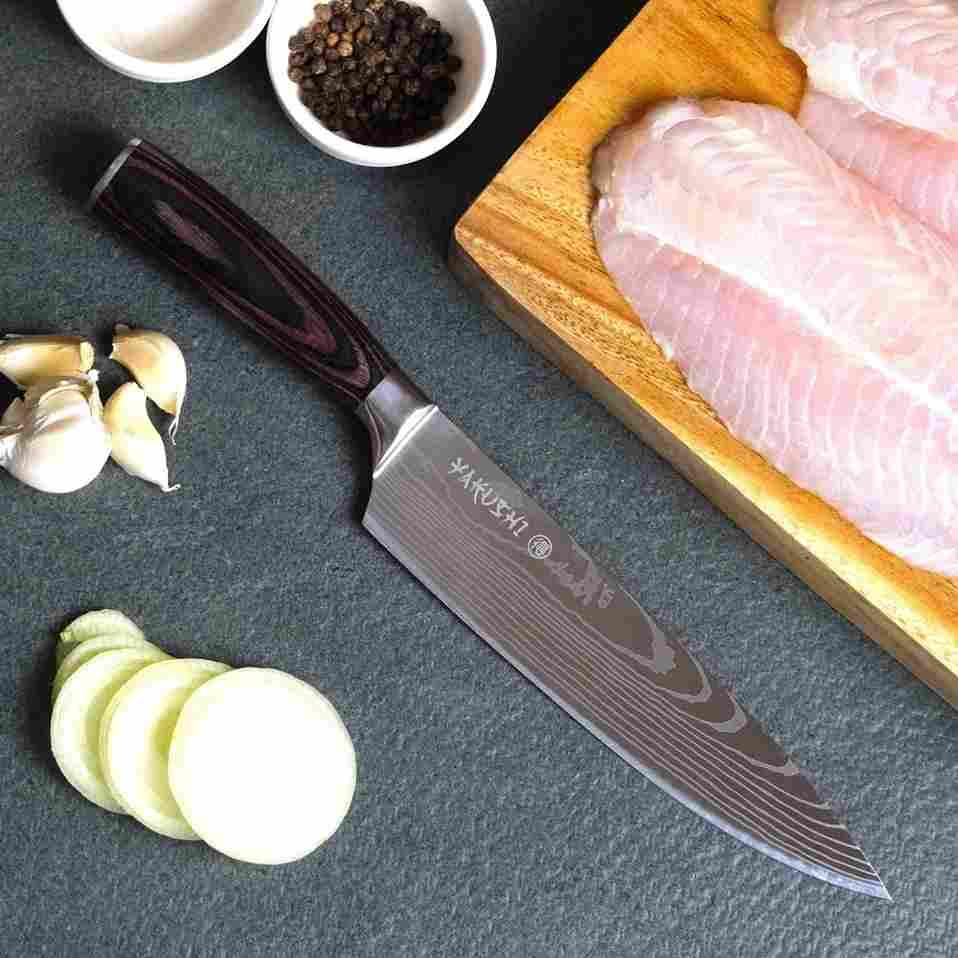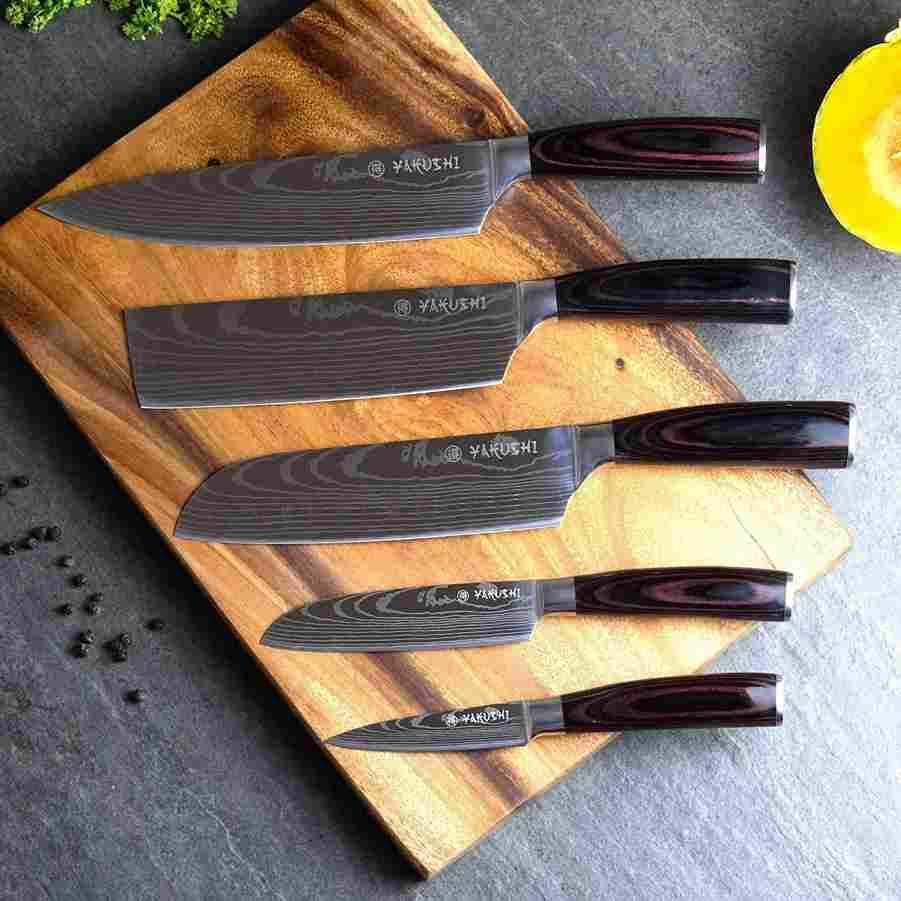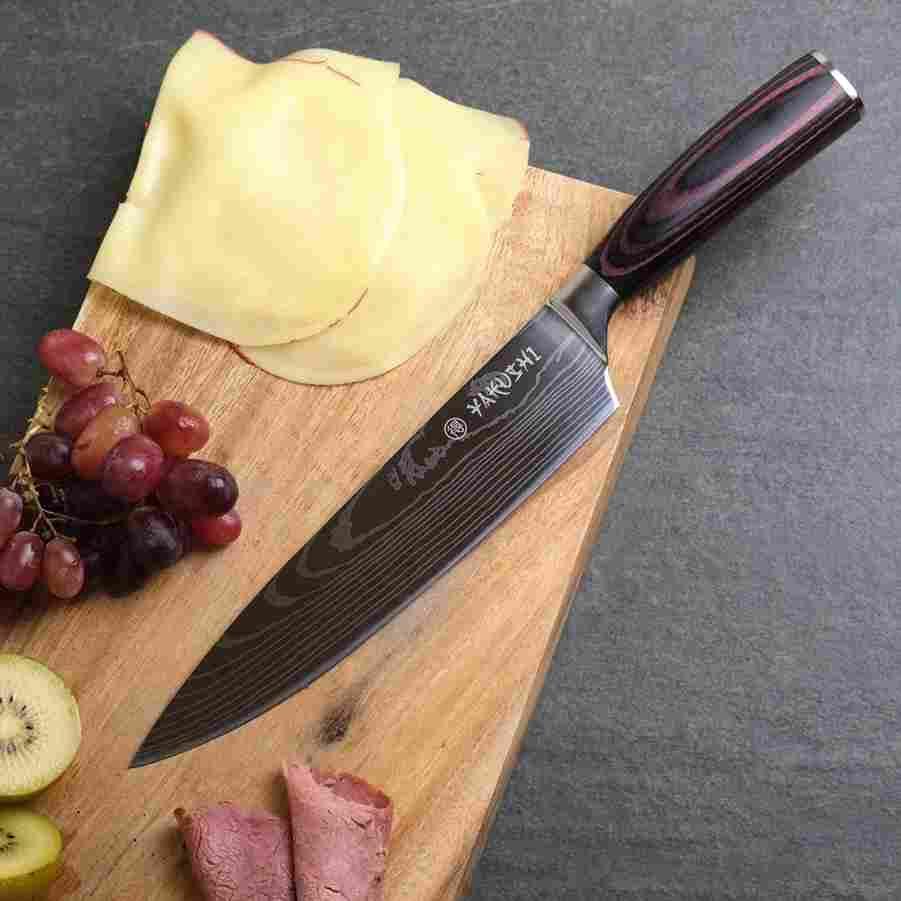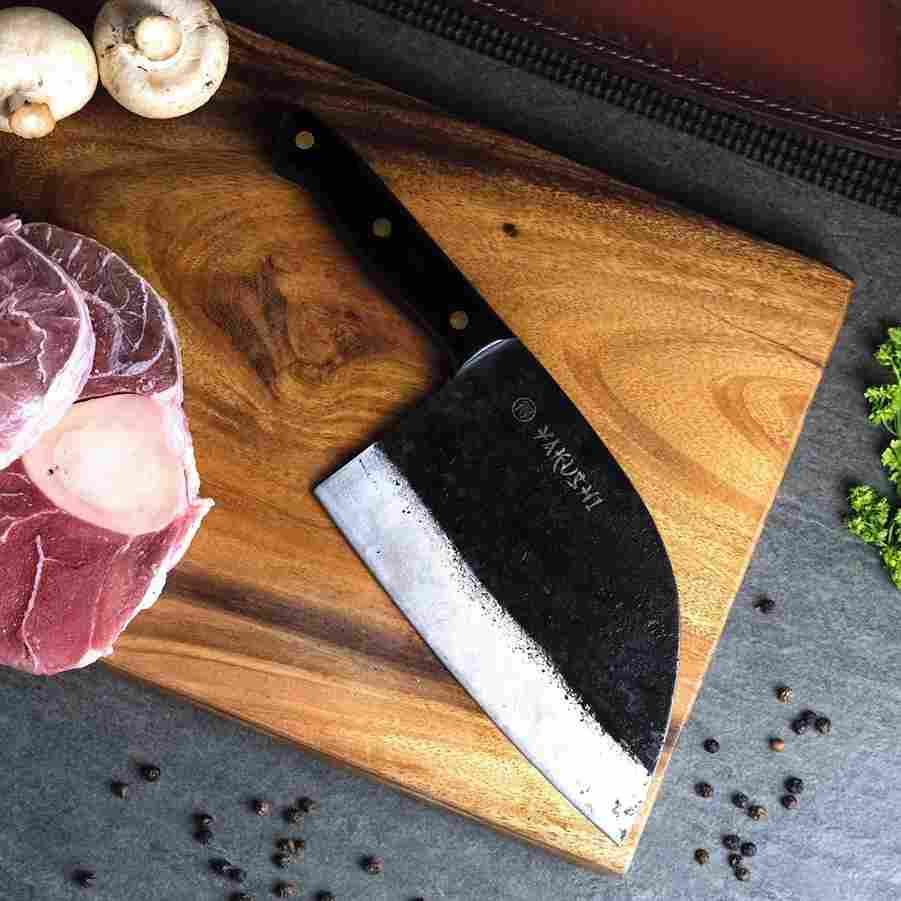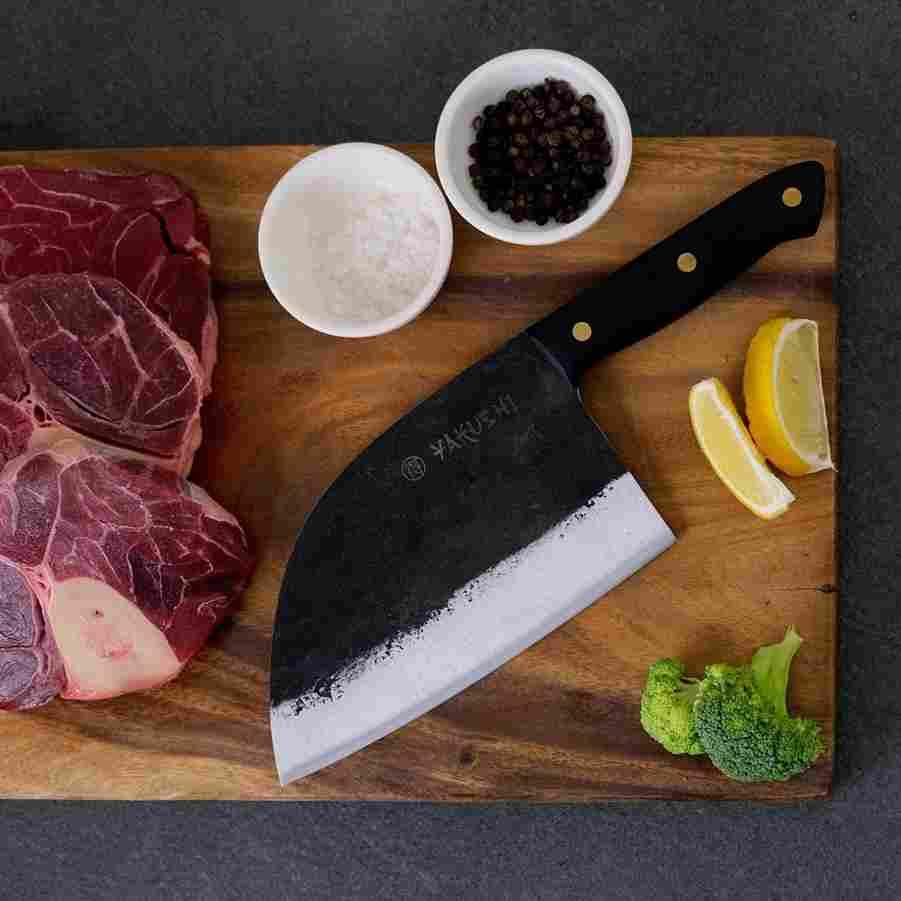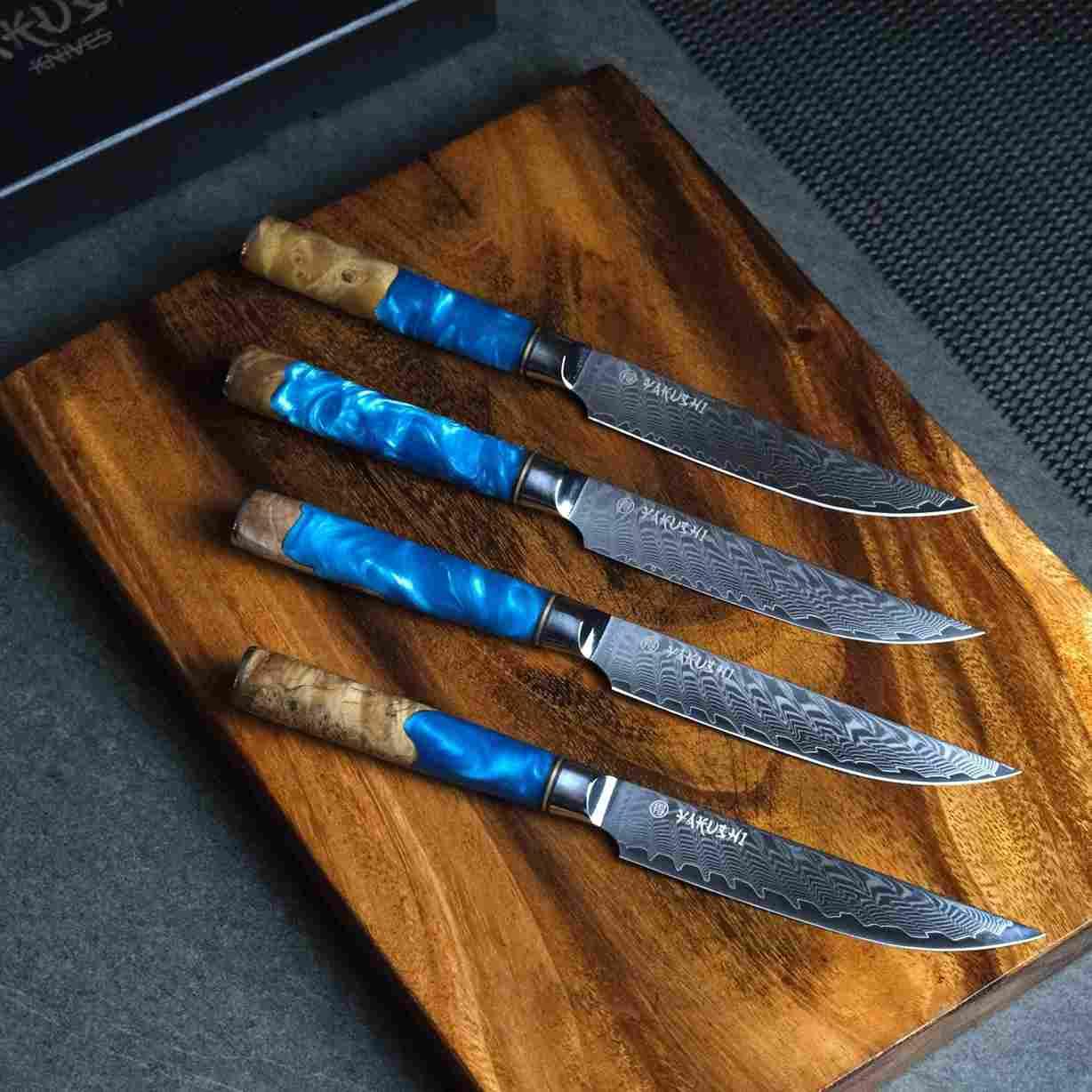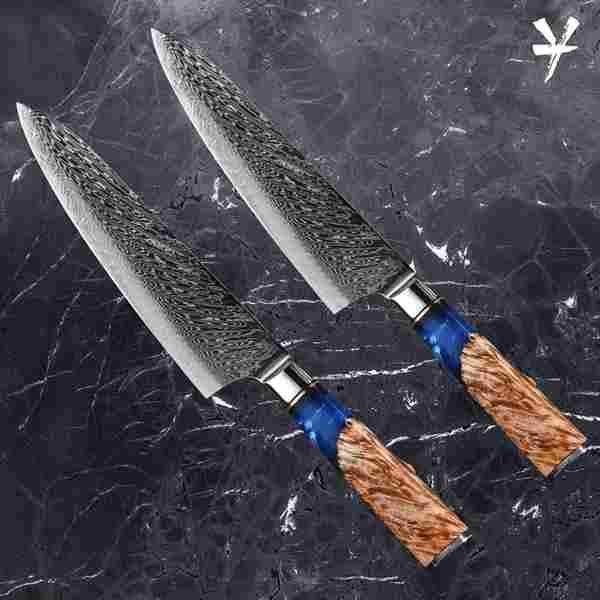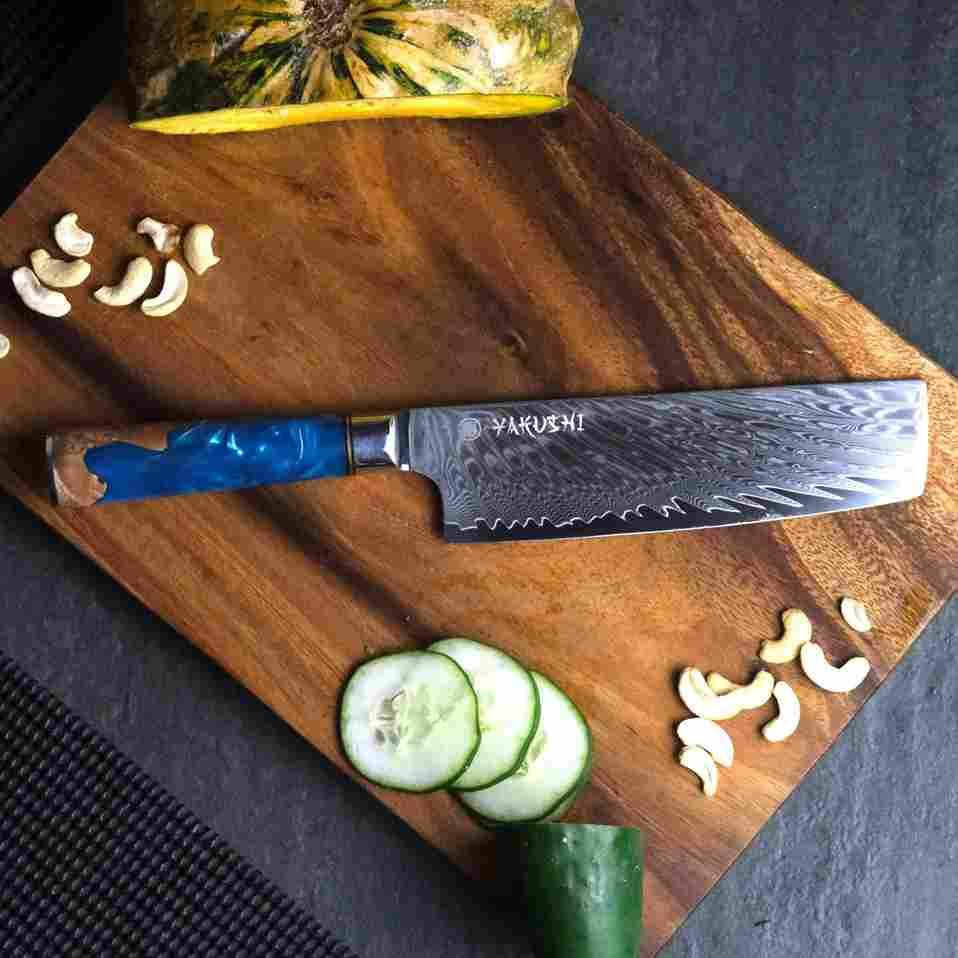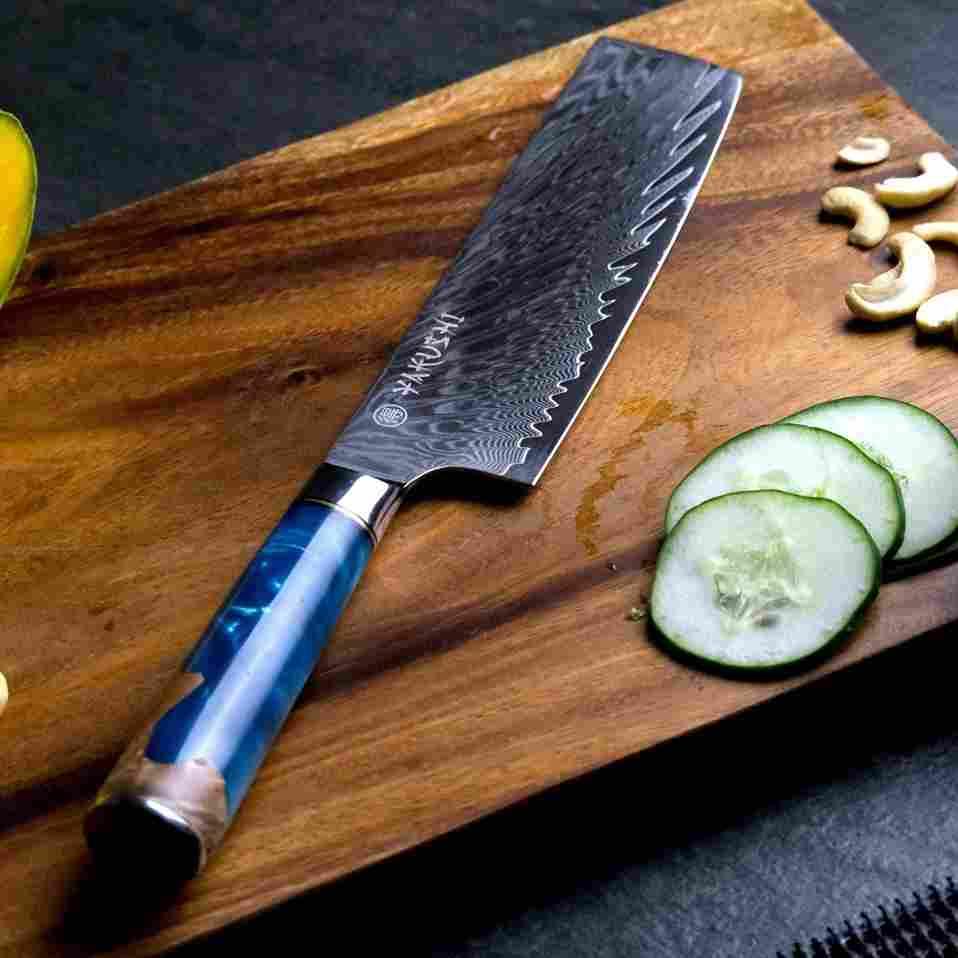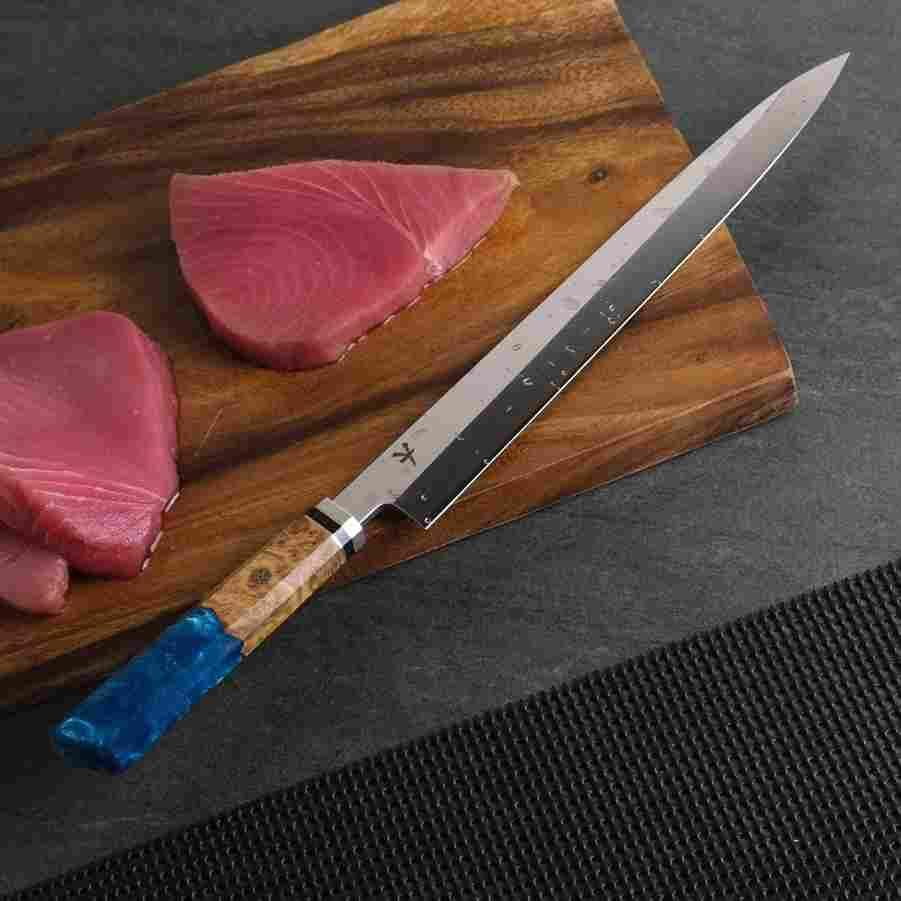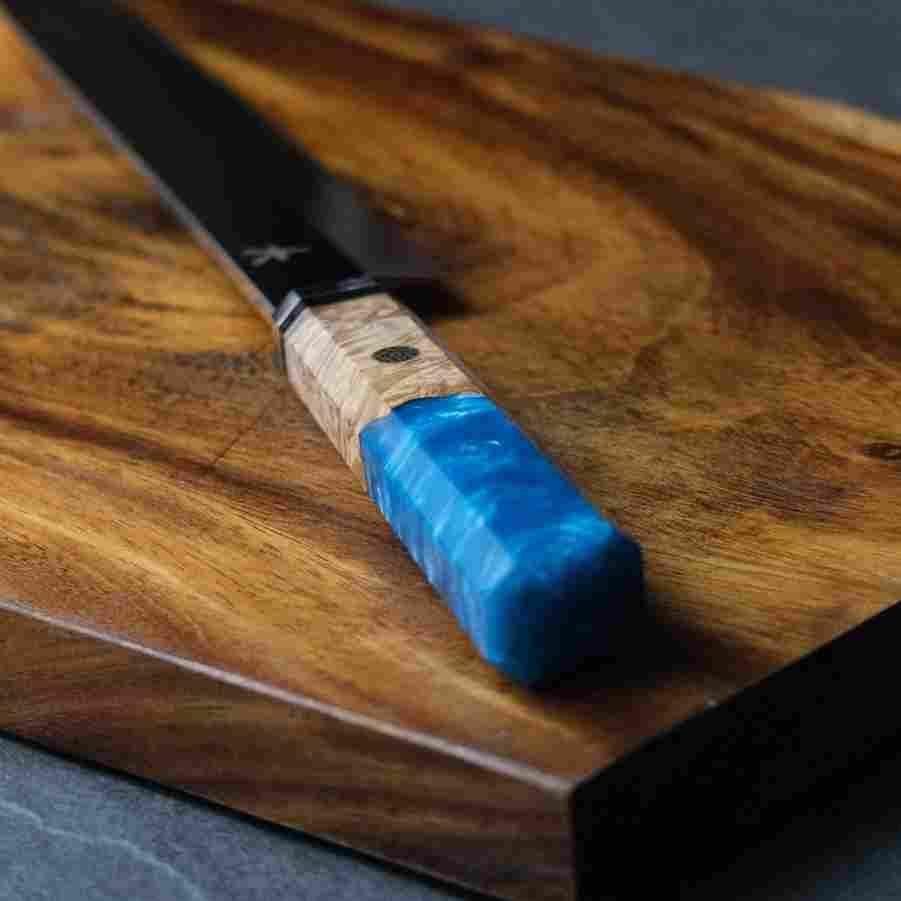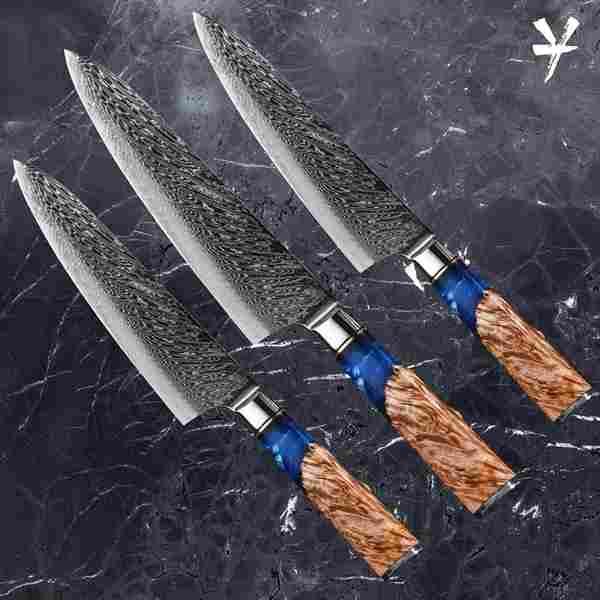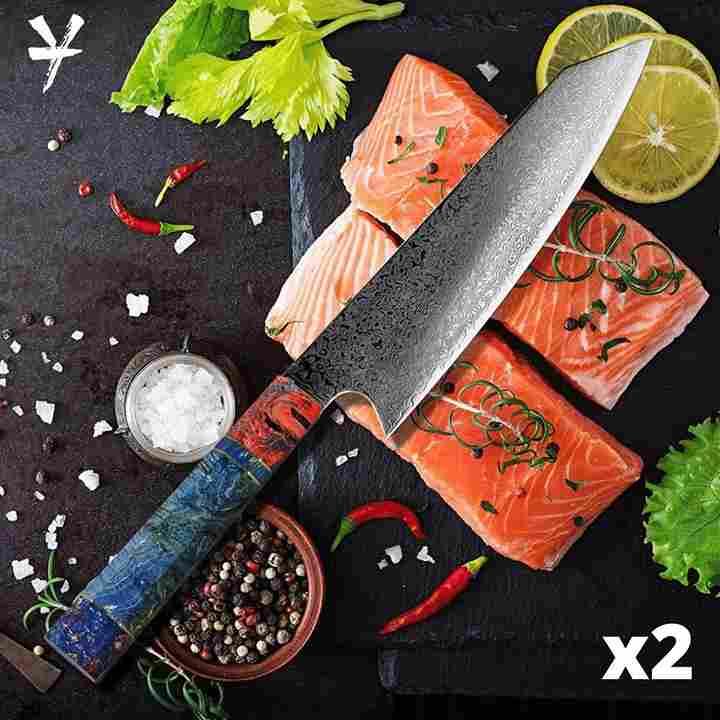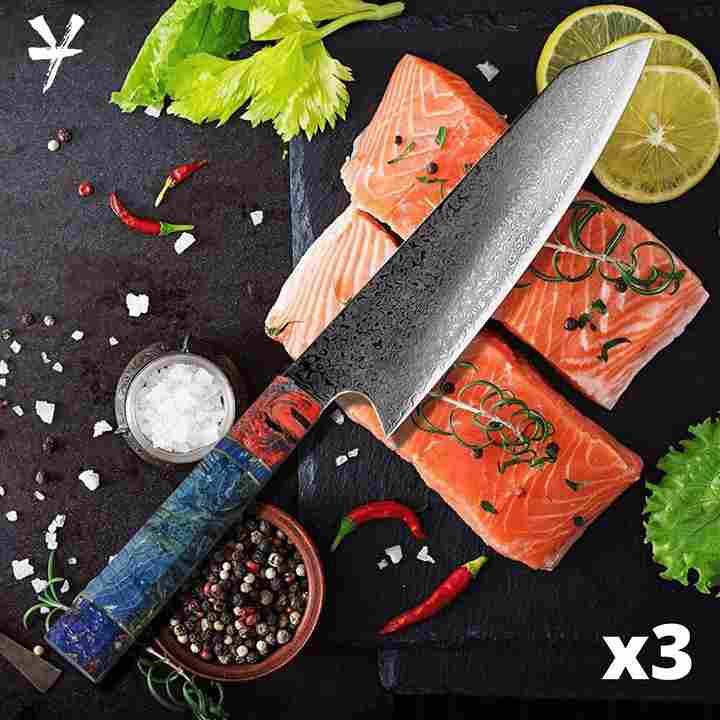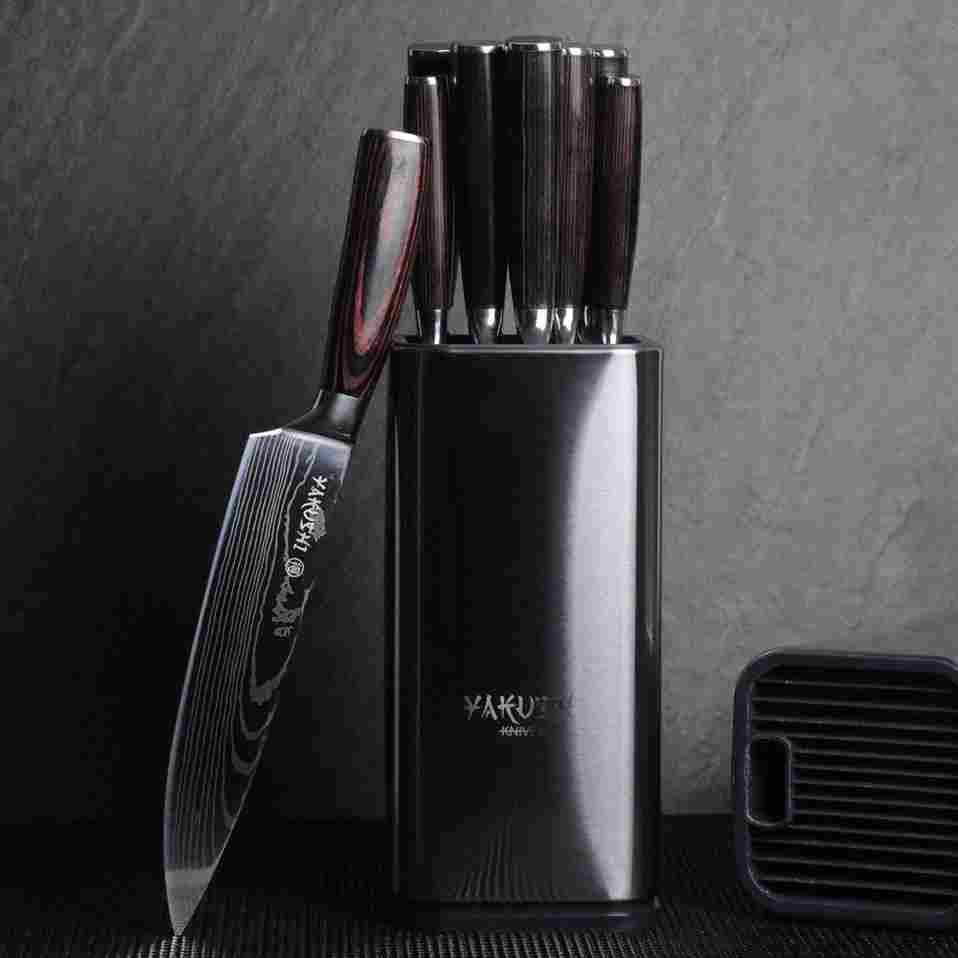Filters
13 products
Japanese Cooking Knives
Japanese cooking knives are essential tools for any aspiring chef or home cook looking to elevate their culinary skills. These precision instruments have a rich history and unique characteristics that set them apart from Western-style knives. You'll find that Japanese style cooking knives offer superior sharpness, balance, and craftsmanship, making them a favorite among professional chefs worldwide.
When searching for the best Japanese cooking knives, it's crucial to understand the key features that make them stand out.
Blade Material and Construction of Japanese Cooking Knives
When choosing Japanese cooking knives, understanding the blade material and construction is crucial. The type of steel used significantly impacts the knife's performance, durability, and maintenance requirements. Let's explore the key aspects of blade material and construction in Japanese style cooking knives.
High-Carbon Steel vs Stainless Steel
Japanese cooking knives are typically made from either high-carbon steel or stainless steel. High-carbon steel blades are known for their exceptional sharpness and edge retention. They can achieve a razor-sharp edge and maintain it for longer periods. However, they require more maintenance as they are prone to rusting and discoloration if not properly cared for.
Stainless steel blades, on the other hand, are more resistant to corrosion and easier to maintain. They contain a minimum of 10.5% chromium, which forms a protective layer against rust. While they may not achieve the same level of sharpness as high-carbon steel, modern stainless steel alloys like VG-10 and AUS-10 offer excellent performance and edge retention.
Damascus and Layered Steel
Many high-end Japanese cooking knives feature Damascus or layered steel construction. This technique involves forge-welding multiple layers of different types of steel together. The result is a blade with a distinctive wavy pattern and enhanced properties.
Damascus steel knives often have a hard, high-carbon steel core surrounded by softer, more corrosion-resistant layers. This combination provides the benefits of both materials: a sharp, durable edge and improved overall toughness. The layered construction also contributes to the knife's esthetic appeal, making it a prized possession for many chefs and cooking enthusiasts.
Heat Treatment Process
The heat treatment process plays a crucial role in determining the final properties of Japanese cooking knives. This process involves carefully heating and cooling the blade to achieve the desired hardness and structure.
During heat treatment, the blade is heated to a specific temperature, held for a certain period, and then rapidly cooled or quenched. This process alters the steel's molecular structure, increasing its hardness and edge retention capabilities. The Rockwell scale (HRC) is used to measure the hardness of the blade, with Japanese knives typically ranging from 58 to 65 HRC.
The heat treatment process also influences the blade's ability to take and hold a sharp edge. Properly heat-treated Japanese cooking knives can achieve exceptional sharpness, making them ideal for precise cutting tasks in the kitchen.
Blade Shape and Design
When choosing a Japanese cooking knife, understanding the blade shape and design is crucial for optimal performance in the kitchen. The blade's profile, geometry, and edge type significantly impact its cutting ability and versatility.
Gyuto vs Santoku
Two popular types of Japanese cooking knives are the Gyuto and Santoku. The Gyuto, often called a Japanese style chef knife, is similar to a Western chef's knife but with some distinct differences. It features a slightly curved edge, making it ideal for rocking motions when chopping vegetables or mincing herbs. The Gyuto's versatility allows you to handle a wide range of tasks, from slicing meat to dicing vegetables.
On the other hand, the Santoku, which means "three virtues" in Japanese, excels at slicing, dicing, and mincing. It has a flatter edge profile compared to the Gyuto, making it better suited for up-and-down chopping motions. The Santoku's wide blade also helps with food transfer from cutting board to pan.
When deciding between a Gyuto and Santoku for your Japanese cooking knives set, consider your cutting style and the tasks you perform most often in the kitchen. The Gyuto offers more versatility, while the Santoku provides precision for specific cutting techniques.
Single Bevel vs Double Bevel
Another important aspect of Japanese cooking knives is the bevel type. Single bevel knives have only one angled side, resembling a chisel, while double bevel knives have two angled sides forming a V-shape.
Single bevel knives, traditionally used in Japanese cuisine, excel at precise cuts and are ideal for tasks like fileting fish or creating thin slices for sashimi. They require more skill to use effectively but offer unparalleled precision for specific tasks.
Double bevel knives, more common in Western-style Japanese cooking knives, are more versatile and easier to use for most home cooks. They provide balanced cutting performance and are suitable for a wide range of kitchen tasks.
FAQs
What are the indicators of a high-quality Japanese cooking knife?
The quality of a Japanese knife is largely determined by its blade material. Premium knives are usually crafted from either high-carbon steel or stainless steel. While high-carbon steel is celebrated for its sharpness and longevity, it demands more care to avoid rust and corrosion.
What distinguishes Japanese cooking knives from others?
Japanese knives are recognized for their thinner, harder, and sharper blades, which maintain their edge for a longer period. This reflects the longstanding Japanese tradition of pursuing excellence in craftsmanship.
How do Japanese knives compare to Western knives?
Japanese knives tend to be lighter and feature a straight, thinner, and sharper blade compared to Western knives. This design enhances precision when slicing softer foods.
What should I consider when selecting a Gyuto knife?
When choosing a Gyuto knife, consider the type of steel. Stainless steel is ideal for those who prefer a corrosion-resistant blade, whereas carbon steel is suitable for those who appreciate a knife that develops a patina over time.
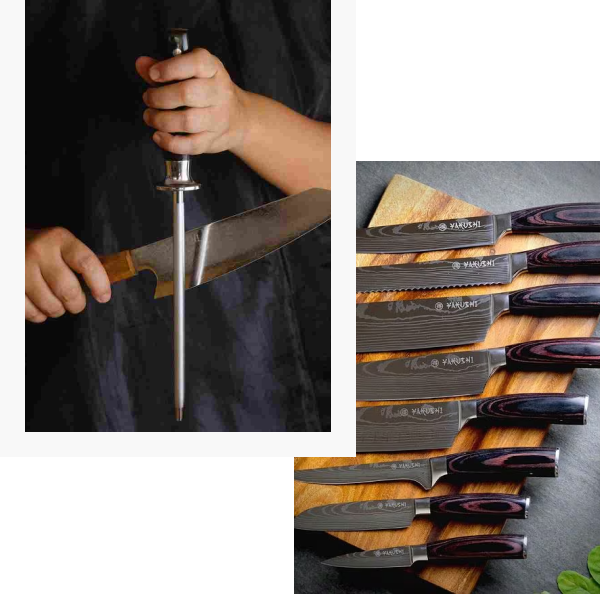
About the Knives
We are passionate craftsmen, dedicated to creating exceptional Japanese knives that embody beauty, function, and tradition. We use only the finest materials and employ conventional forging techniques to ensure that our knives are not only razor-sharp and durable but also a work of art.
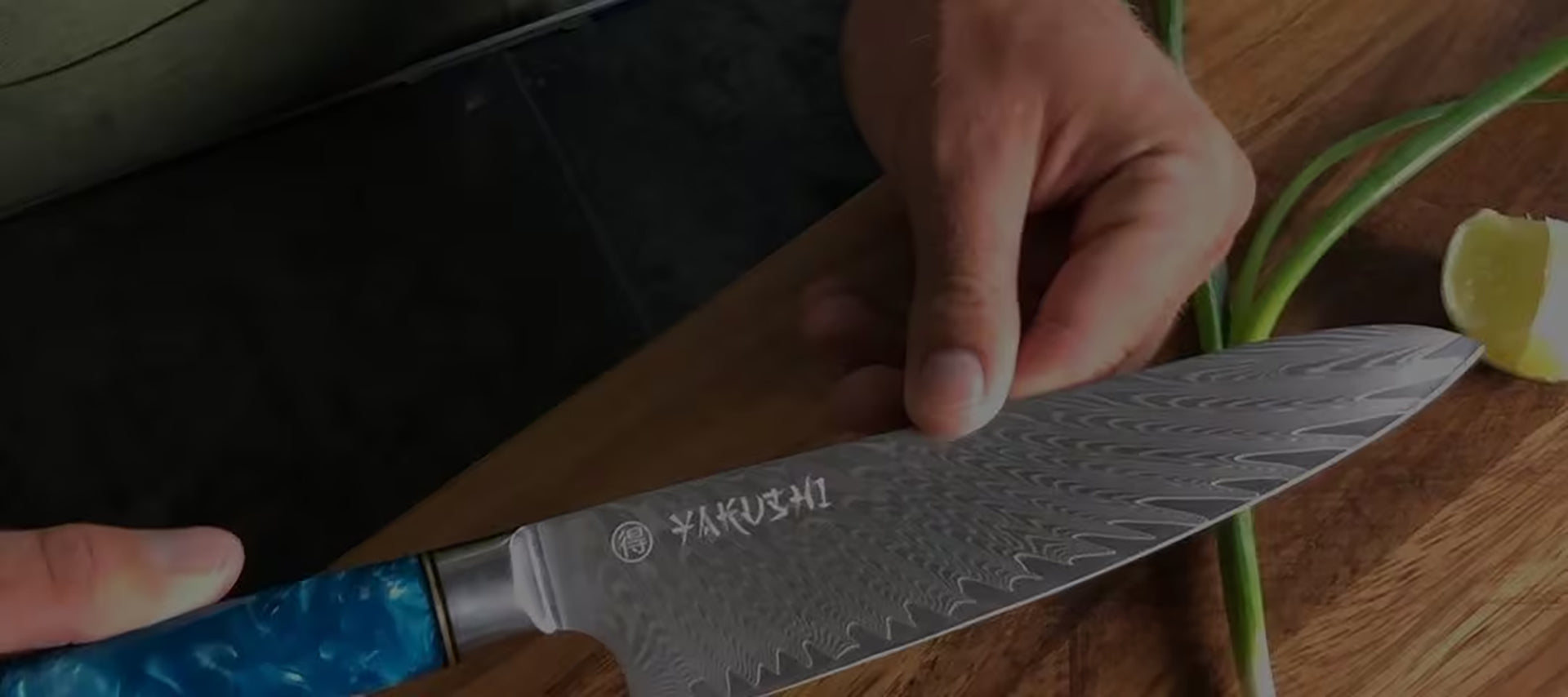
WATCH VIDEO
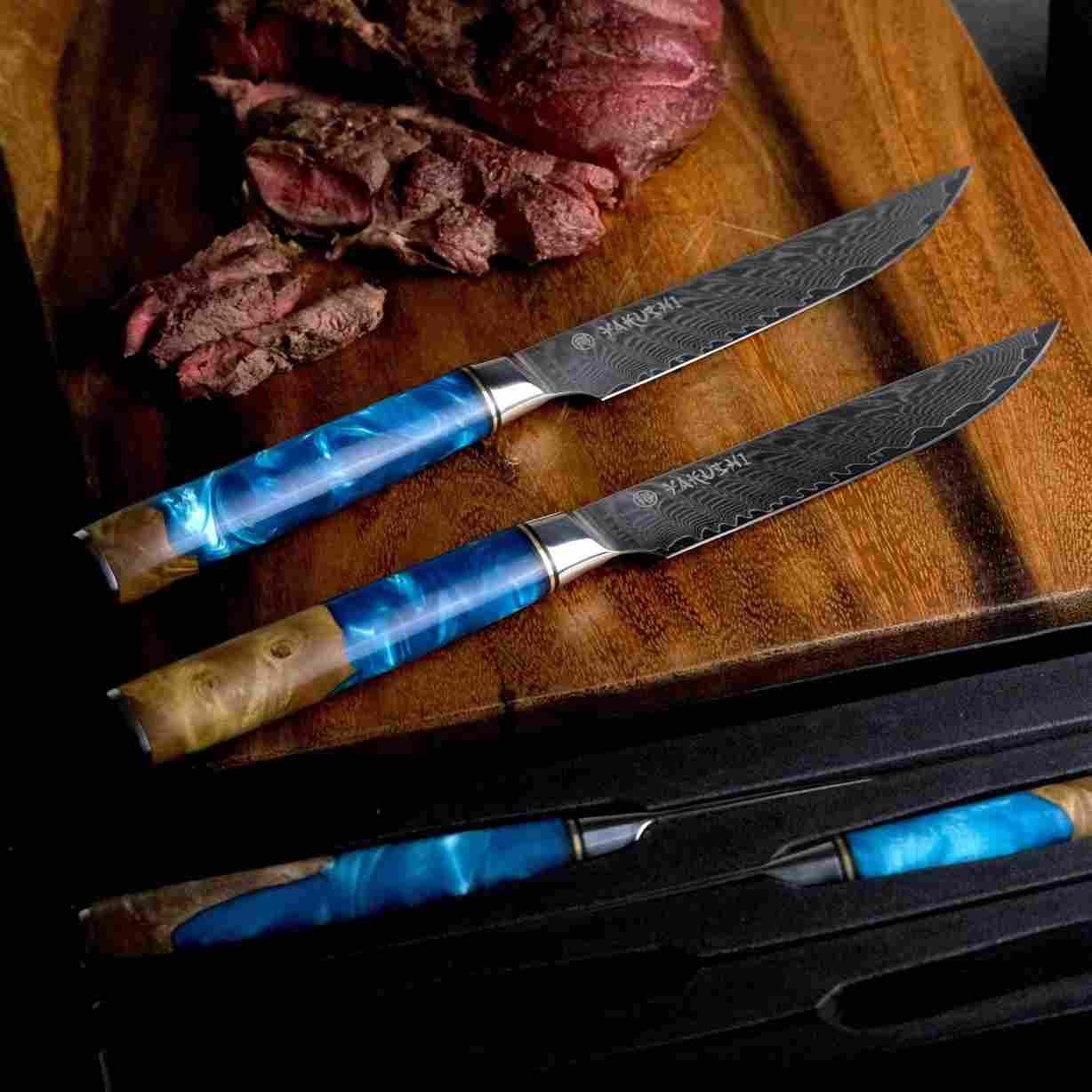
Yakushi™ Damascus Steel Chef Knife
A Classy Handcrafted Set, Not only for special occasions.
This Steak Knife Set includes four beautifully crafted knives, making it perfect for families or small dinner parties. The knives come in a stylish box, making it an excellent gift for any steak lover in your life.
I really like the traditional look. They have perfect balance and grip. Incredibly sharp as well!
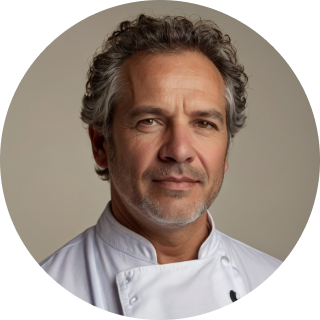
The Knives are perfect and sharp! I love chopping vegetables with my family now!

I ordered the 5 Piece Set and it exceeds my expectations!


